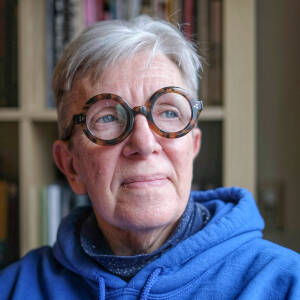Awe and shadow
Last night Sue and I sat on the front row of the orchestra for Carlos Kalmar’s version of Shostakovich’s 10th Symphony. The piece is genius, and Kalmar’s direction and this orchestra’s performance was one of the most memorable musical events of my life. It was wonderful to be close enough to watch every muscle in Kalmar’s face, hands, and back; to observe his emotion and that of Sarah Kwak, the concertmaster; and to see, hear, and feel the intensity and passion of an orchestra that behaved like a single living organism.
The program notes explain that this symphony is a portrait of Stalin, and during the intermission before the symphony, after a pleasant but forgettable Brahms, Sue and I talked about what a frightening task Shostakovich set for himself. How can anyone render in music anything as horrible as a single man responsible for the deaths of eight to twenty million people? Why does an artist spend his energy exploring horror that is beyond any telling? This symphony is the answer to those questions. Not to deal with that horror, not to grapple with it, not to honor the depths of human capacity, is to allow the crimes to be forgotten, to allow us to believe that our kind doesn’t have that awful capacity. And that must never happen. I think Shostakovich gave rein in the music to his fury at what Stalin had done, and he posed a tender counterpoint, a kind of motif of human resilience surviving unimaginable horror.
There’s a competent, academic, well-written review of the symphony here.
Today Bella spent the day with me again, and I found this moment of chiaroscuro with her. It seemed to reflect the music that was still sounding in my bones. I wish her the courage to look into the terror which will no doubt come to her. How else can she, or any of us, ever feel our gratitude for the love?

Comments
Sign in or get an account to comment.


